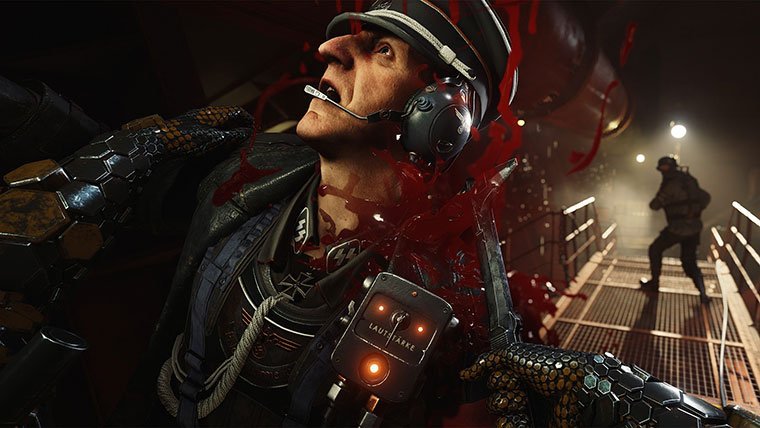

In November 1991, the recently established video game development company Id Software, founded by programmers John Carmack and John Romero, game designer Tom Hall, and artist Adrian Carmack, were planning their next major game after finishing their contract with their former employer Softdisk.
#WHEN WILL WOLFSTIEN BE RELEASED FOR MAC SOFTWARE#
Inc.ġ992–2001: id Software and a new direction
#WHEN WILL WOLFSTIEN BE RELEASED FOR MAC SERIES#
Twelve more titles, Beyond Castle Wolfenstein, Wolfenstein 3D, Wolfenstein 3D: The Spear of Destiny, Return to Castle Wolfenstein, Wolfenstein: Enemy Territory, Wolfenstein RPG, Wolfenstein, Wolfenstein: The New Order, Wolfenstein: The Old Blood, Wolfenstein II: The New Colossus, Wolfenstein: Youngblood, and Wolfenstein: Cyberpilot have been published as games of the Wolfenstein series since the release of Castle Wolfenstein in 1981 by M.U.S.E. Wolfenstein 3D helped to establish the first-person shooter genre and has been called the "grandfather of 3D shooters" Castle Wolfenstein later went on to heavily inspire the 1992 game, Wolfenstein 3D developer Id Software were able to use the name as the trademark had already lapsed by 1986. Muse Software then released Beyond Castle Wolfenstein in 1984 before the company legally disestablished on October 7, 1987. Castle Wolfenstein was the first computer game to feature digitized speech and influenced the development of other similar game franchises such as Metal Gear and Thief. The game is often credited as one of the first video games in the stealth genre, since it focuses more on avoiding or disarming enemies, and killing them is considered a last resort. The objective is to retrieve the war plans for Operation Rheingold and escape the fortress, while avoiding or killing guards along the way.

Set during World War II, Castle Wolfenstein focuses on an unnamed American prisoner of war who has been imprisoned in the German stronghold of Castle Wolfenstein. He eventually settled on the idea of a game based on the arcade shoot 'em up genre, where players dodge enemies with the intent of killing them, but instead changing the objective to escape the enemy guards and their castle, not necessarily to kill and destroy them this made shooting guards simply a means to an end and not an end in itself. After playing the game he thought about taking the design of Bezerk and replacing the robots with Nazis. The same day Warner saw The Guns of Navarone, he played the multi-directional shooter arcade game, Berzerk, in which the player navigates through a maze with laser-shooting robots. The game was initially conceptualized by Warner after he saw the 1961 British-American war film The Guns of Navarone, which follows the efforts of an Allied commando unit as they attempt to destroy a seemingly impregnable German fortress. Castle Wolfenstein was published by his then company M.U.S.E.


Warner was a pioneer in the early eras of video gaming, especially the stealth genre. It was developed by American programmer Silas Warner, along with Dale Gray and George Varndell. The Wolfenstein series of video games started with the 1981 stealth-adventure video game Castle Wolfenstein. The series presents an action-heavy take on the fight against Nazi Germany. Those developed by MachineGames are set in an alternate history in which Axis powers won World War II. Earlier titles are centered around Nazis attempting to harness supernatural and occult forces. The majority of the games follow William "B.J." Blazkowicz, a Jewish Polish-American Army Captain and his fight against the Axis powers. Wolfenstein games developed by MachineGames include Wolfenstein: The New Order, Wolfenstein: The Old Blood, Wolfenstein II: The New Colossus, Wolfenstein: Youngblood, and Wolfenstein: Cyberpilot. After ZeniMax Media acquired id Software, including the Wolfenstein franchise, Swedish developer MachineGames became the series' primary developer. Further games in the series include Return to Castle Wolfenstein, developed by Gray Matter Interactive, Wolfenstein: Enemy Territory by Splash Damage, and 2009's Wolfenstein by Raven Software. Beginning with id Software's Wolfenstein 3D, Wolfenstein games became fast-paced first-person shooters, and are widely regarded as having helped to popularize the first-person shooter genre. The first two games in the series, Castle Wolfenstein and Beyond Castle Wolfenstein, were developed by Muse Software and focused on stealth-based gameplay from a top-down perspective. It was originally created by Muse Software, before being revived by id Software. Wolfenstein is a series of World War II video games.


 0 kommentar(er)
0 kommentar(er)
